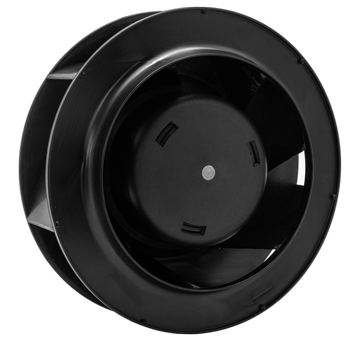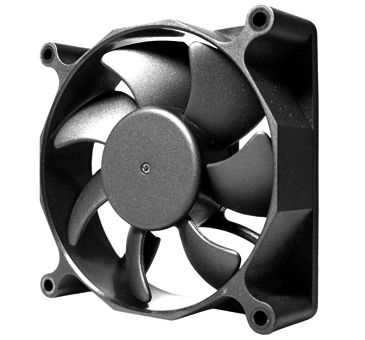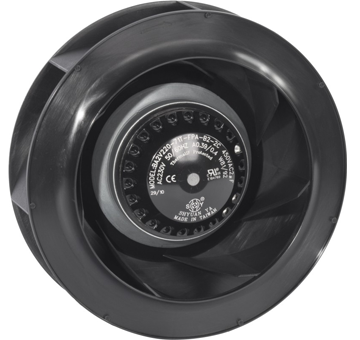7 Things You Should Know Before Choosing Between a Centrifugal Fan and an Inline Duct Fan
1. Understanding the Basic Design: How Centrifugal Fans and Inline Duct Fans Work

When it comes to choosing the right ventilation fan, the first thing you should know is how centrifugal fans and inline duct fans actually work. Though they both move air efficiently, they do it in very different ways — and that affects everything from noise to performance.
A centrifugal fan pulls air into the center of the fan and pushes it out at a 90-degree angle through rotating blades. This design produces higher air pressure, making it ideal for systems that need to move air through long ducts, filters, or bends. Think of it as a “pressure booster” — powerful and steady, great for industrial or commercial ventilation.
An inline duct fan, on the other hand, is built directly into a straight duct line. It moves air in the same direction as the duct, keeping the airflow path smooth and linear. These fans are generally more compact, easier to install, and perfect for spaces that need a quiet, continuous airflow, like bathrooms, grow rooms, or small offices.
✅In simple terms:
- Centrifugal fan = stronger air pressure, great for longer duct systems
- Inline fan = quieter, more compact, ideal for light or short duct ventilation
2. Airflow and Pressure: Why Centrifugal Fans Deliver Stronger Performance for Certain Spaces
Airflow and pressure are two of the most important “things you should know” when comparing fan performance. This is where the centrifugal fan really stands out.
Because of its curved blade design, a centrifugal fan can handle more resistance and still push air efficiently. It’s perfect for large buildings, workshops, commercial kitchens, or HVAC systems that require airflow through multiple filters or long duct runs.
In contrast, inline duct fans are designed for low to moderate airflow resistance. They’re best for short, direct ventilation paths, such as removing humidity from a bathroom or circulating air in a greenhouse.
Example Comparison Table:
| Feature | Centrifugal Fan | Inline Duct Fan |
| Airflow Pressure | High | Medium to Low |
| Ideal Duct Length | Long | Short |
| Efficiency with Filters | Excellent | Moderate |
| Energy Use | Moderate | Low |
| Typical Use | Commercial, Industrial | Residential, Light Commercial |
✅Takeaway:
If your ventilation system involves long ducts or multiple bends, go for a
centrifugal fan. If you just need steady airflow in a small space, an inline duct fan is the simpler choice.
3. Noise Levels and Comfort: Which Fan Type Is Quieter for Home and Office Use?

Noise is one of the first things consumers notice — and one of the top concerns in fan selection.
Generally, inline duct fans are quieter than centrifugal fans because the air moves in a straight path with less turbulence. The fan motor is often placed inside insulated ductwork, reducing sound levels significantly.
Centrifugal fans, while powerful, tend to produce more noise due to higher air pressure and fan blade rotation. However, modern models now include acoustic enclosures, noise-reduction casings, and speed control options that make them surprisingly quiet.
✅Pro Tip:
If quiet operation is your top priority (e.g., for bedrooms, offices, or study areas), choose an inline fan with sound insulation. If you need more power but still care about noise, look for low-noise centrifugal fans with EC motors.
4. Installation and Space Requirements: Choosing the Right Fan for Your Room or Duct Setup
Installation is another major “thing you should know” before buying a fan. The two fan types have very different requirements.
A centrifugal fan is typically mounted externally or in a mechanical room. Because it discharges air at a right angle, it requires more installation space and careful duct alignment. However, it’s also easier to maintain, since the motor and blades are accessible.
An inline duct fan, on the other hand, is installed directly within the duct system. It’s compact and fits neatly between duct sections. This design is great for tight ceiling spaces or attic installations, but access for cleaning or servicing can be more limited.
✅Installation Snapshot:
- Centrifugal fan: More space required, easier maintenance
- Inline duct fan: Compact design, harder to service once installed
If your setup is tight on space, go with an inline duct fan. For long-term durability and easier maintenance, a centrifugal fan may be the better investment.
5. Energy Efficiency and Maintenance: Which Fan Saves More Power and Lasts Longer?

Energy efficiency matters — both for cost savings and environmental reasons. In this area, inline duct fans often have the advantage due to their smaller motors and direct airflow paths. They typically consume less power and generate less heat.
Centrifugal fans, although more powerful, can also be efficient when equipped with EC (Electronically Commutated) motors. EC motors adjust speed automatically based on system demand, saving energy and extending fan life.
Maintenance Tips:
- Keep ducts clean to avoid overloading the fan motor.
- Regularly check fan bearings and filters.
- For centrifugal fans, ensure the impeller is balanced and free from dust buildup.
✅Quick Summary:
- Inline duct fan: Best for energy efficiency and low power consumption.
- Centrifugal fan: Best for long-term performance in heavy-duty systems.
6. Common Applications: Where Centrifugal Fans and Inline Duct Fans Work Best
Choosing the right fan also depends on where you plan to use it. Here’s how both types fit into real-life situations:
Centrifugal Fans – Best for:
- Commercial kitchens
- Factories and workshops
- HVAC systems in large buildings
- Air filtration and industrial exhaust
Inline Duct Fans – Best for:
- Bathrooms and laundry rooms
- Greenhouses and hydroponic setups
- Home ventilation systems
- Office or retail ceiling duct systems
✅Pro Insight:
Think of the centrifugal fan as your “power performer” and the inline duct fan as your “quiet helper.” Both are reliable — the choice depends on how much airflow pressure and noise control you need.
7. How to Decide: Practical Tips for Choosing Between a Centrifugal and an Inline Duct Fan
Now that you understand the main differences, let’s wrap it up with practical advice.
Ask yourself these simple questions:
- How long are your ducts?
→ Long ducts = centrifugal fan; short ducts = inline fan. - How important is quiet operation?
→ Quiet environment = inline fan. - Do you need high airflow pressure?
→ Yes = centrifugal fan. - Is energy efficiency your top priority?
→ Yes = inline fan or EC-motor centrifugal fan. - Is installation space limited?
→ Tight ceiling = inline fan; open area = centrifugal fan.
✅Expert Recommendation:
For homeowners, inline duct fans are often the simplest and most budget-friendly option. For commercial or industrial users, centrifugal fans provide stronger performance and durability.
Frequently Asked Questions (FAQs)
1. What is the main difference between a centrifugal fan and an inline duct fan?
A centrifugal fan pushes air at a 90° angle using high pressure, while an inline duct fan moves air straight through the duct, focusing on efficiency and quiet operation.
2. Which fan type is more energy-efficient?
Inline duct fans typically use less energy because of their smaller motors and streamlined design. However, centrifugal fans with EC motors can also be highly efficient.
3. Are centrifugal fans louder than inline fans?
Yes, generally centrifugal fans are louder due to higher air pressure, but advanced models now feature noise-reduction technology.
4. Which fan is easier to install?
Inline fans are easier to install in limited spaces since they fit directly into ducts. Centrifugal fans need more room but offer easier maintenance.
5. What applications are best for each fan?
Centrifugal fans suit large buildings, workshops, and HVAC systems. Inline fans are perfect for residential ventilation or small commercial setups.
6. How do I know which fan I need for my home?
If you’re unsure, start with your space requirements and noise tolerance. Consult with a ventilation expert or supplier to find the best fit for your environment.
Conclusion
Understanding the differences between centrifugal fans and inline duct fans is essential for choosing the right ventilation solution.
To recap:
- Centrifugal fans offer power, durability, and superior airflow for complex systems.
- Inline duct fans provide simplicity, quietness, and energy efficiency for everyday spaces.
By knowing these 7 key things, you’ll not only make a smarter purchase — you’ll also enjoy better air quality, lower noise, and improved comfort at home or work.



.png)


.jpg)